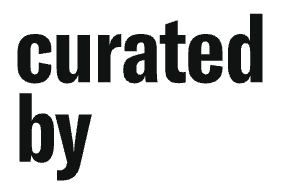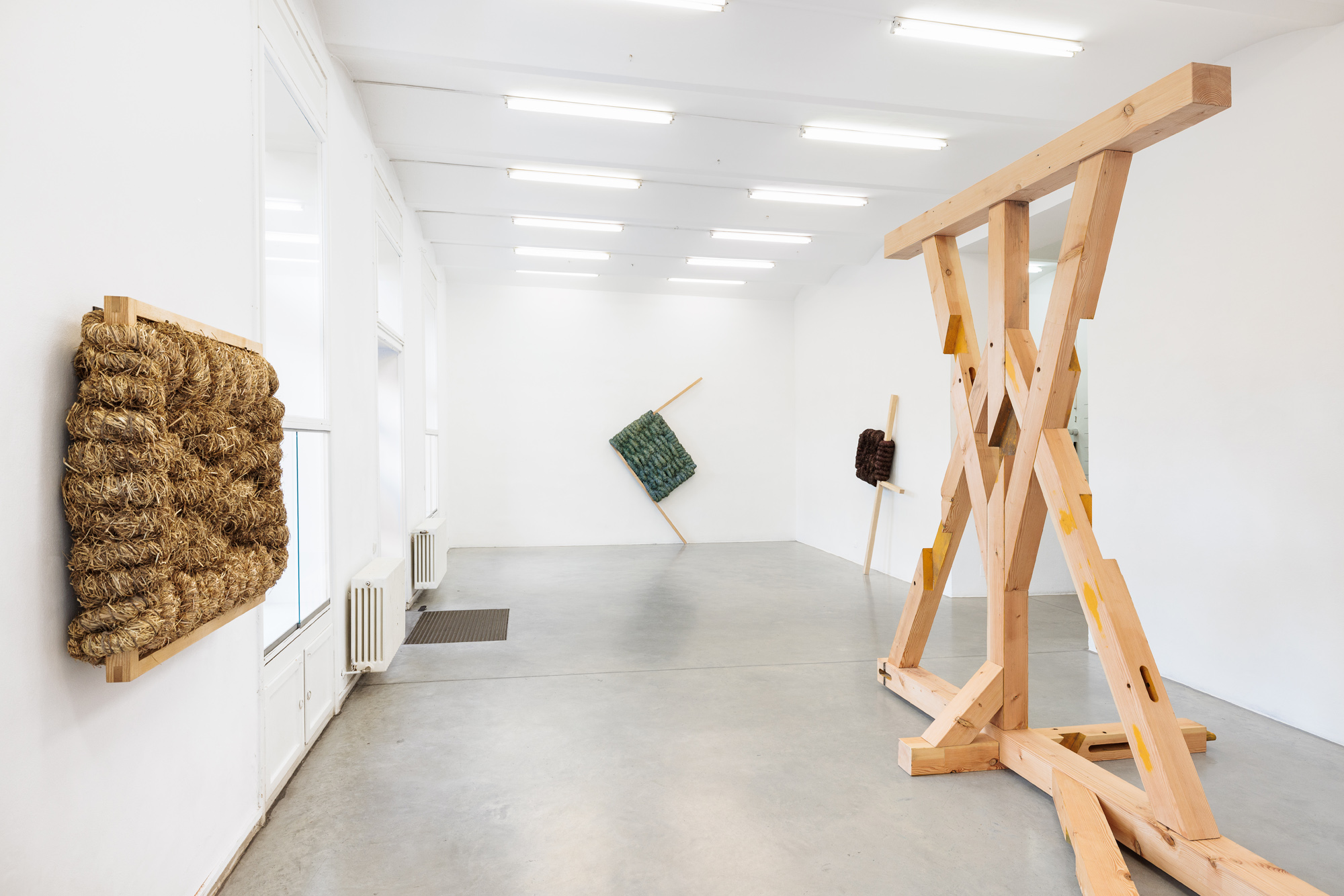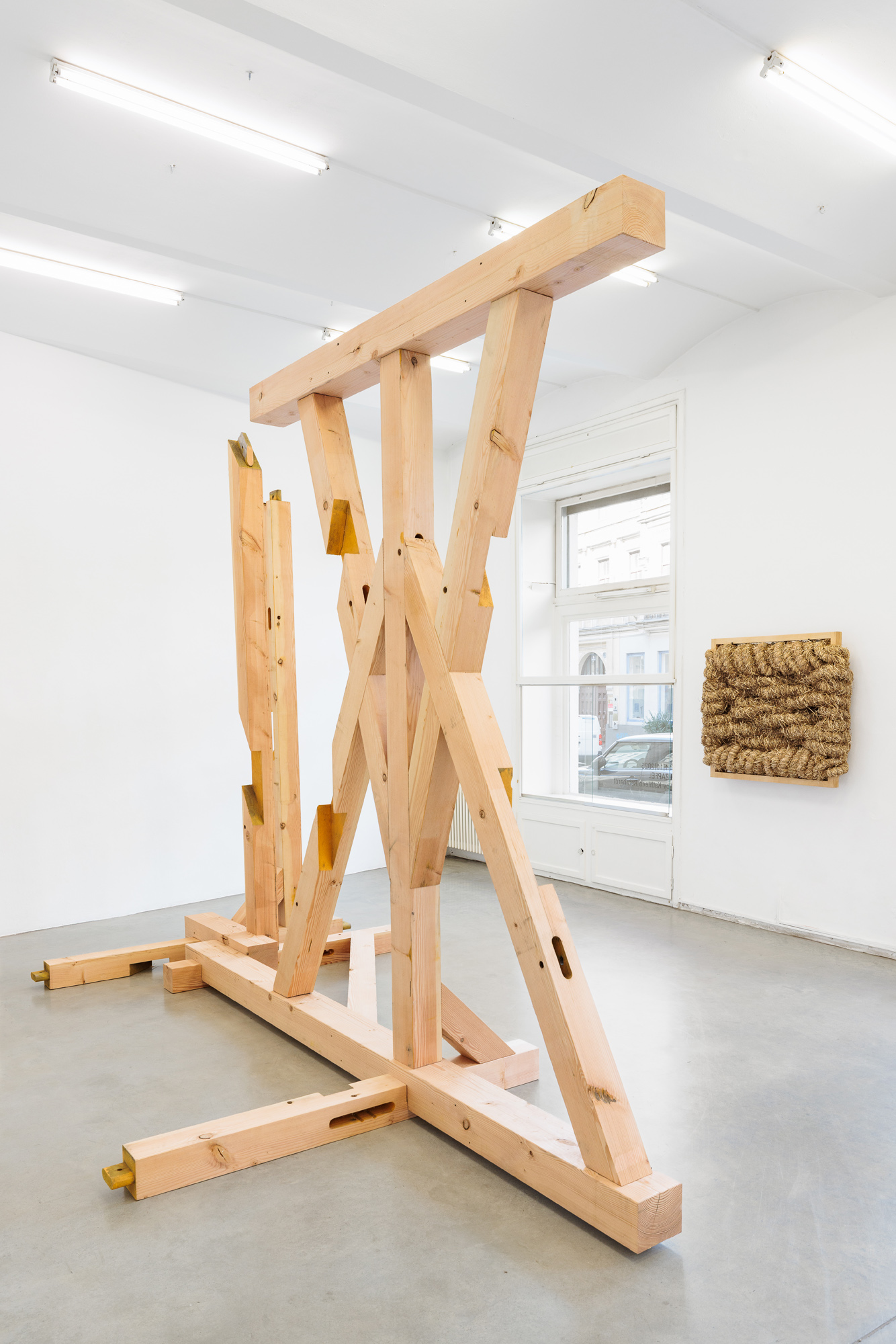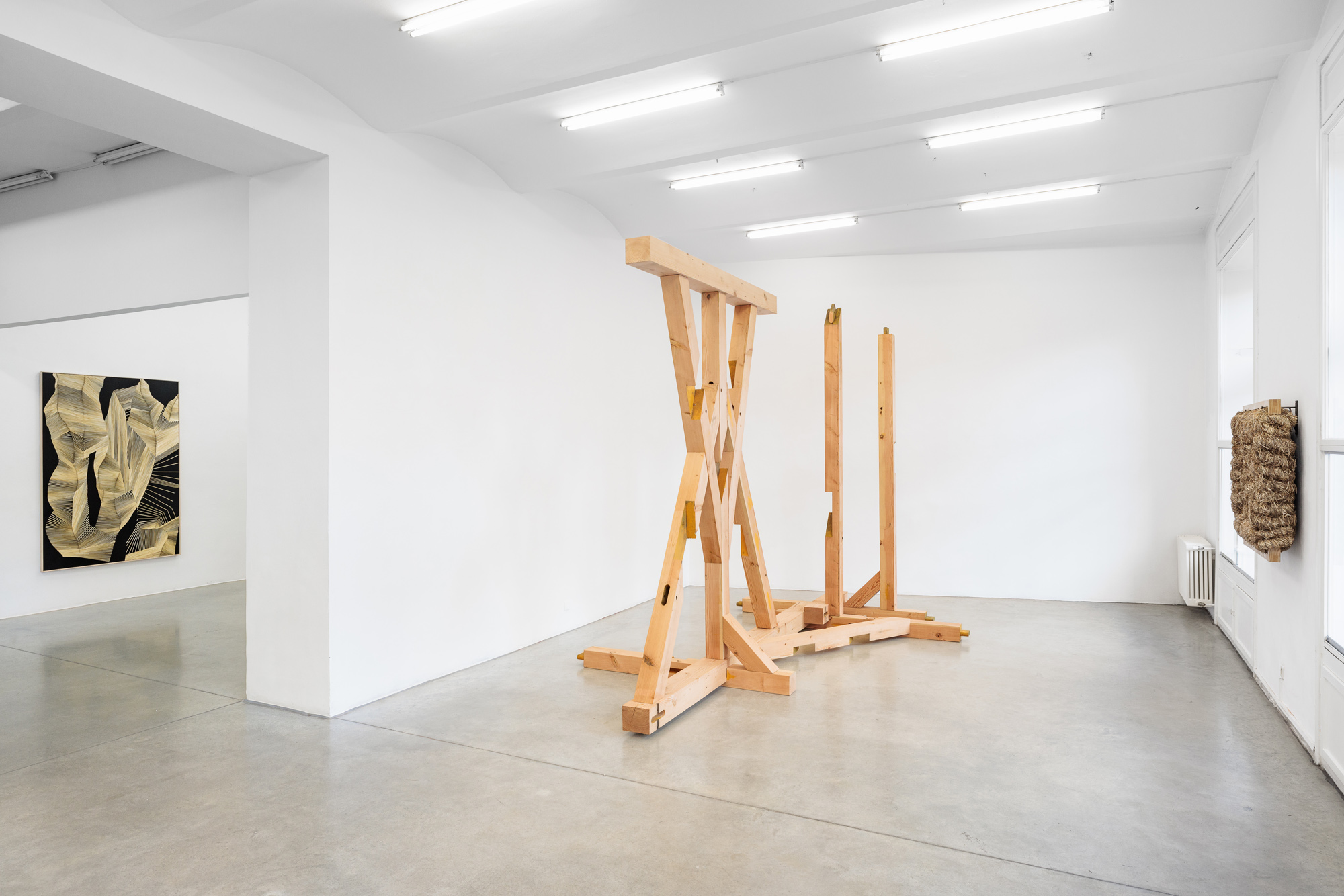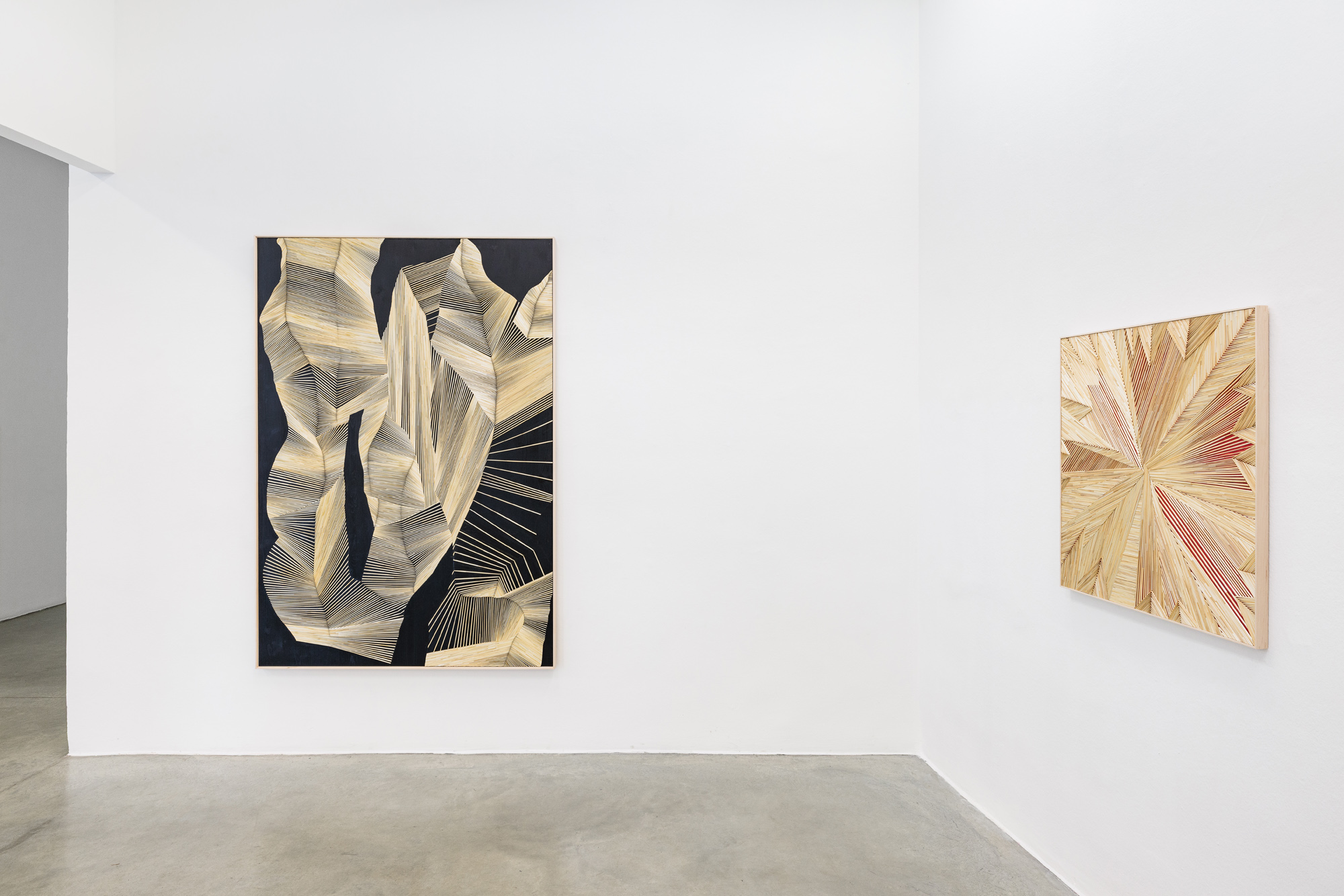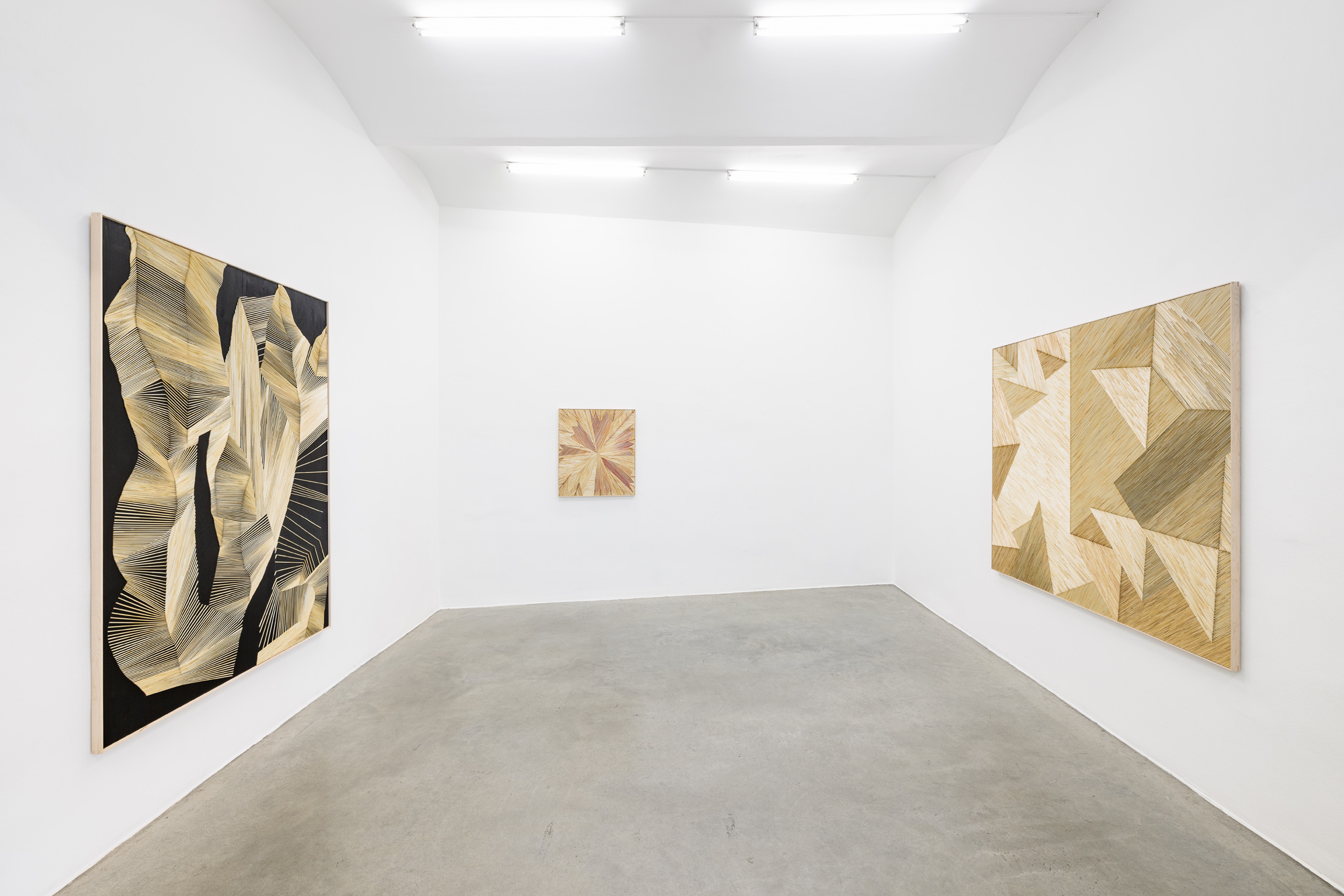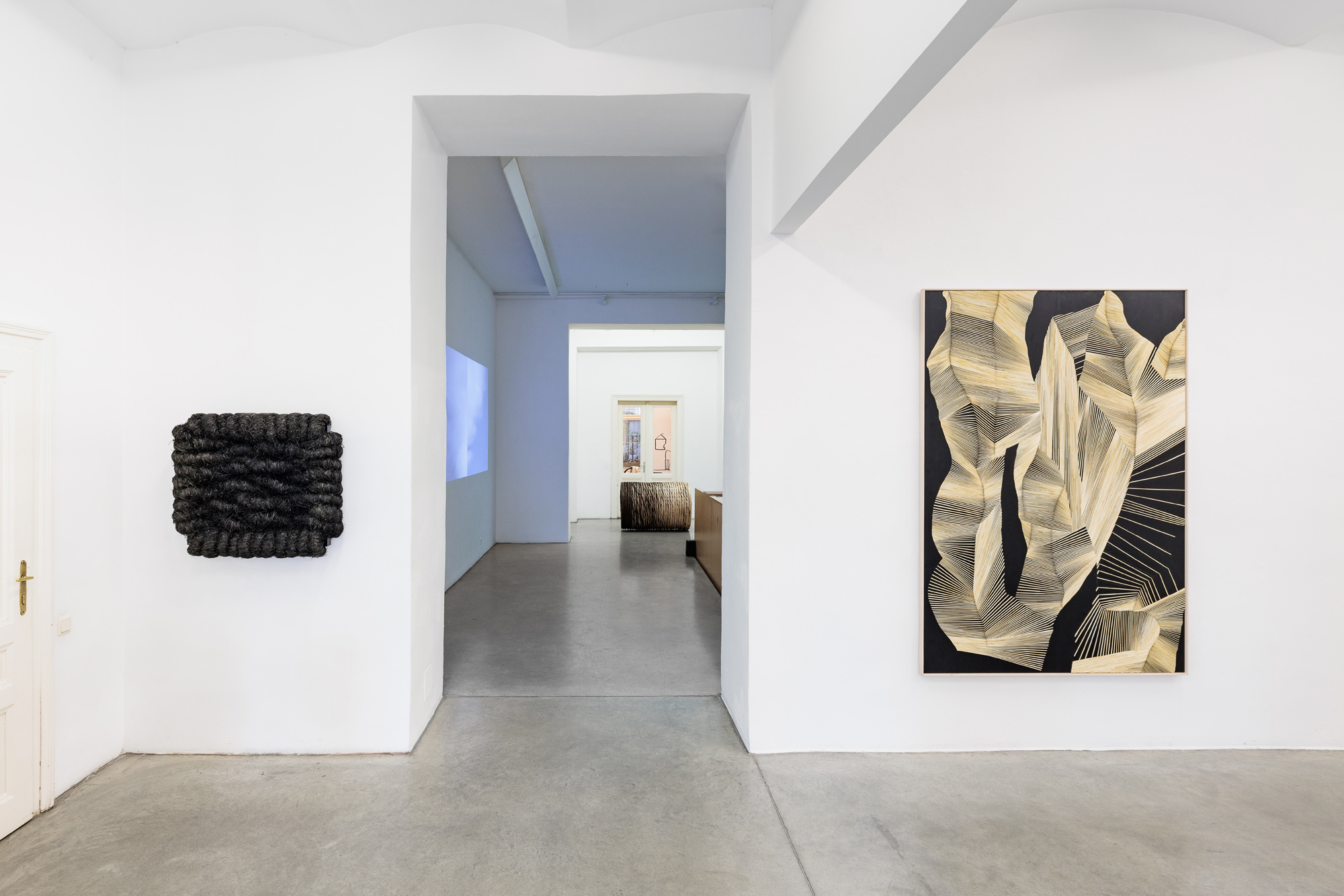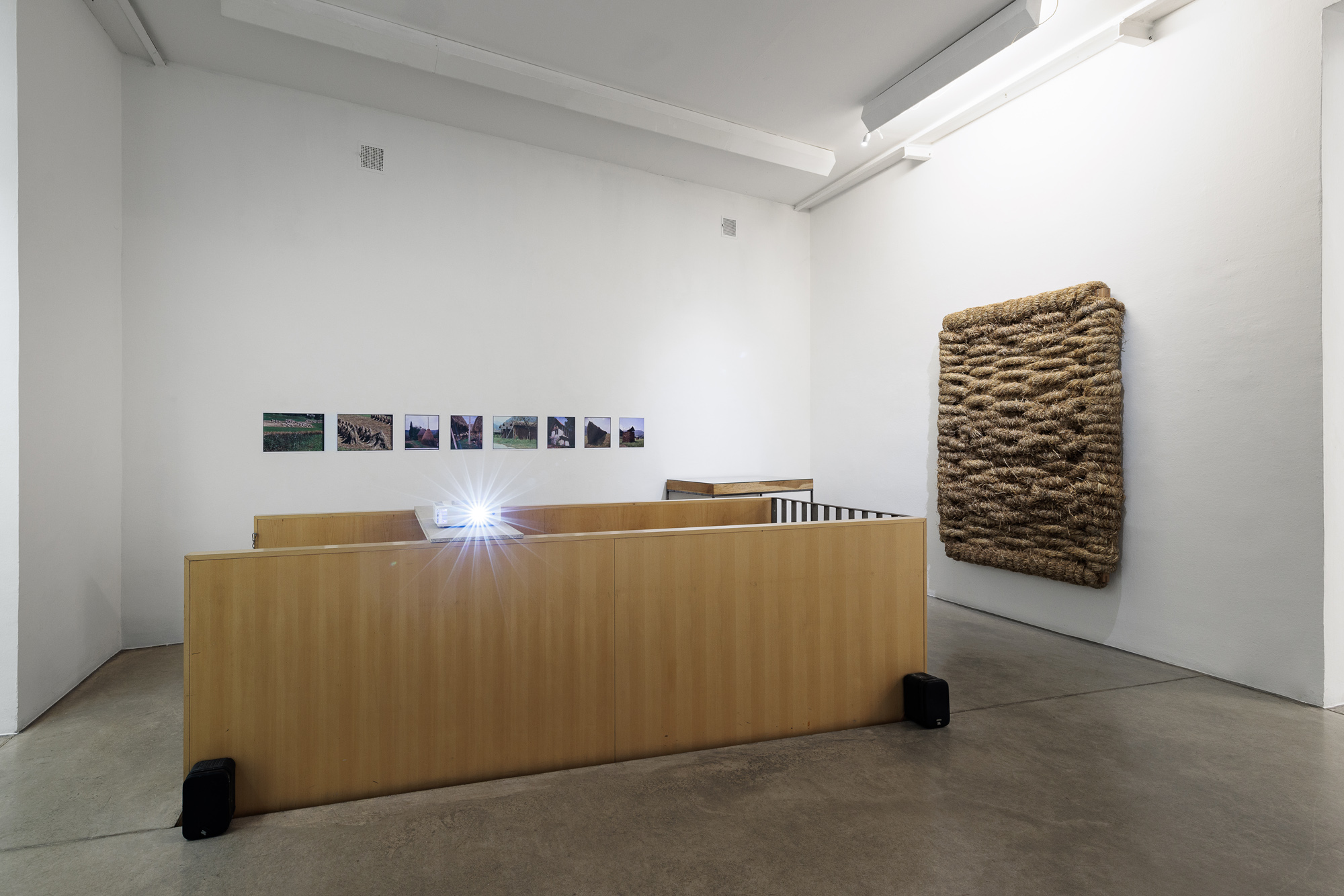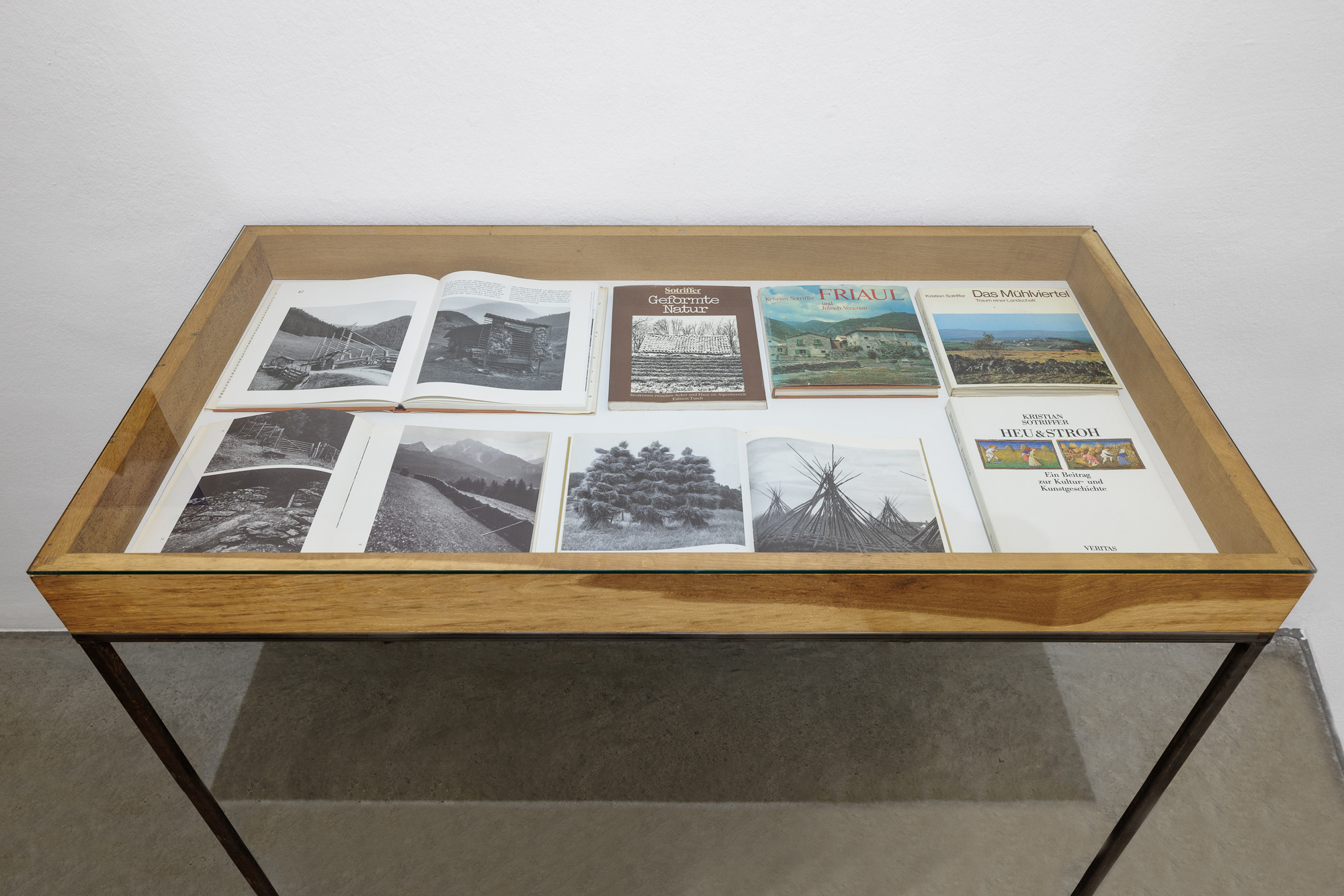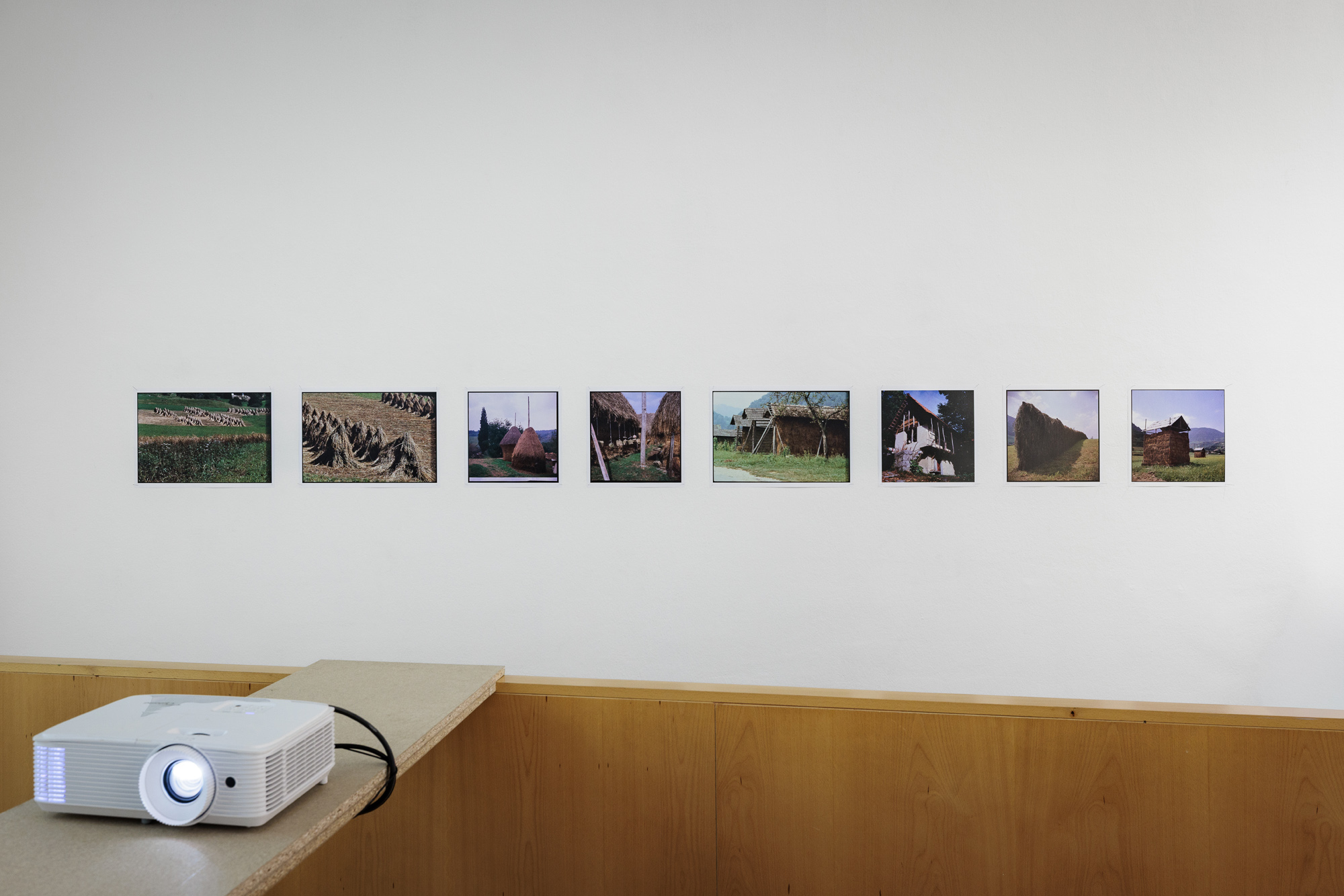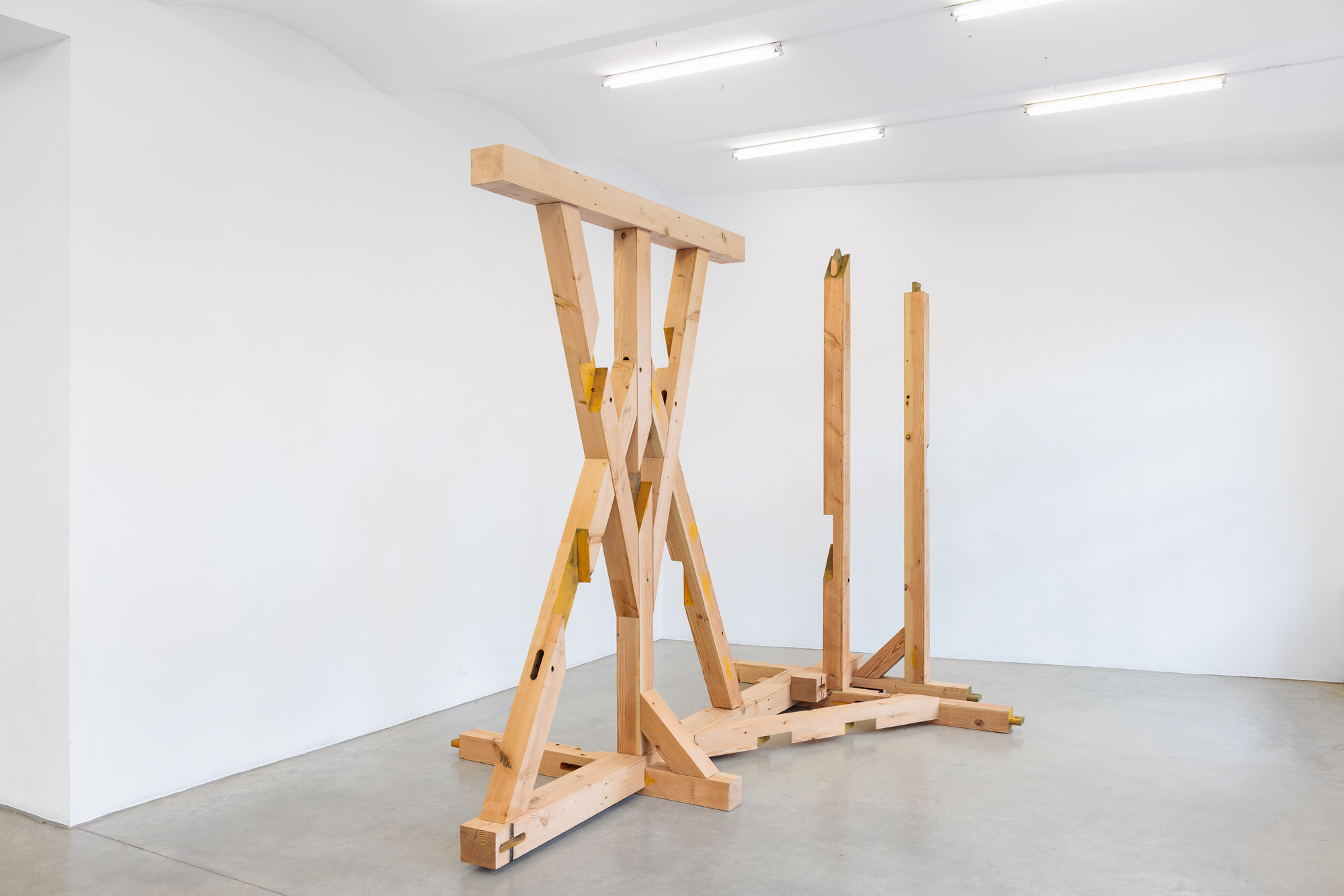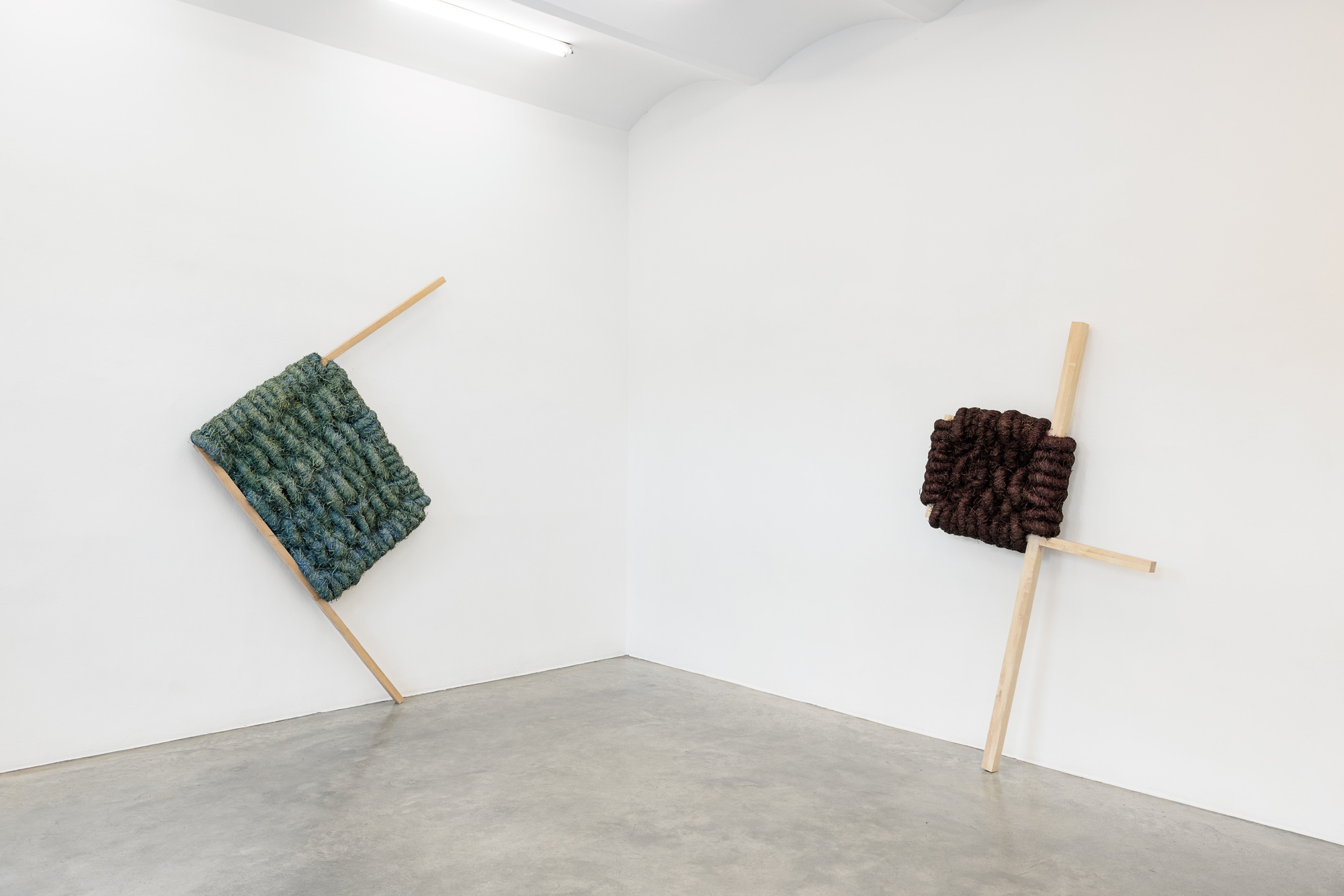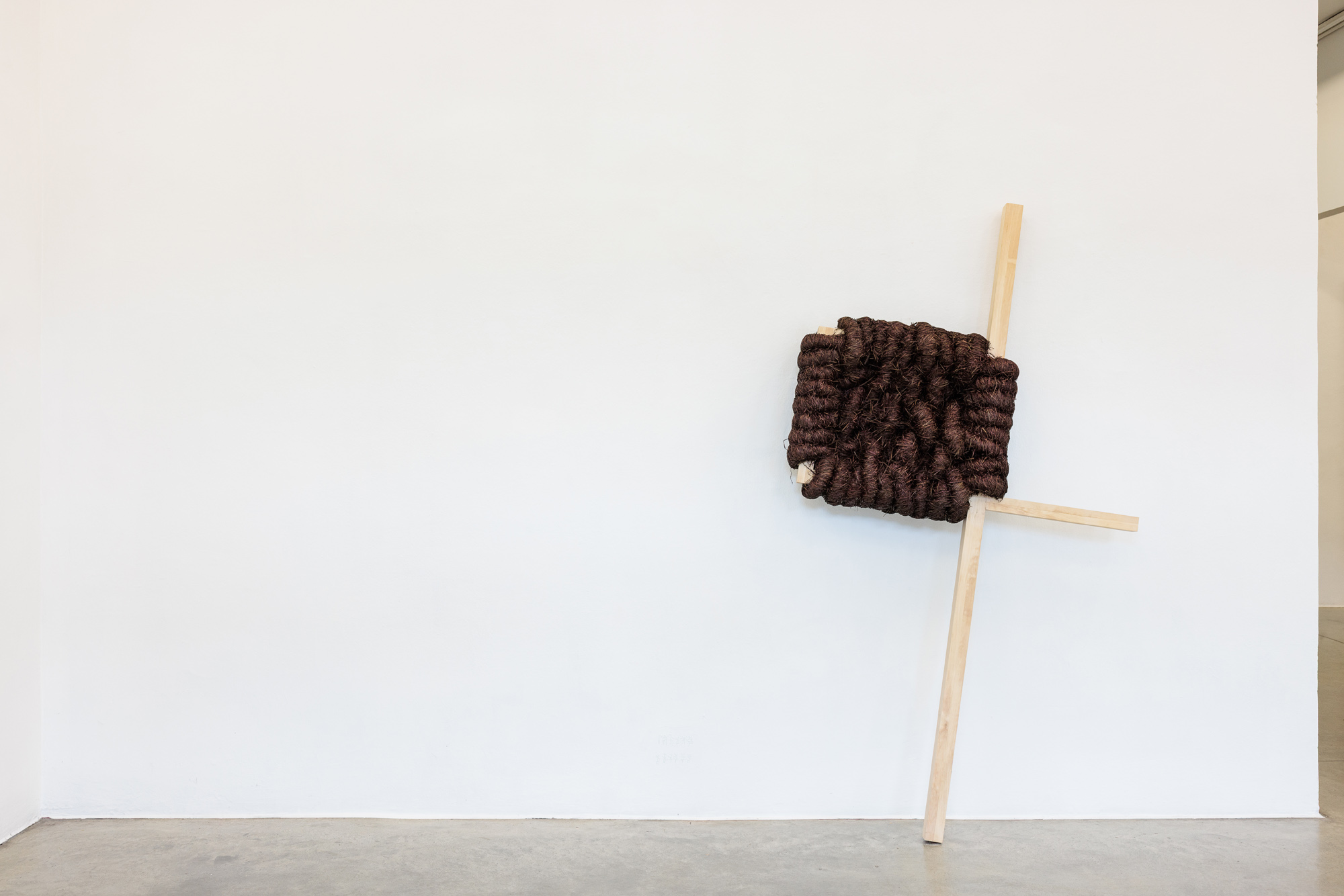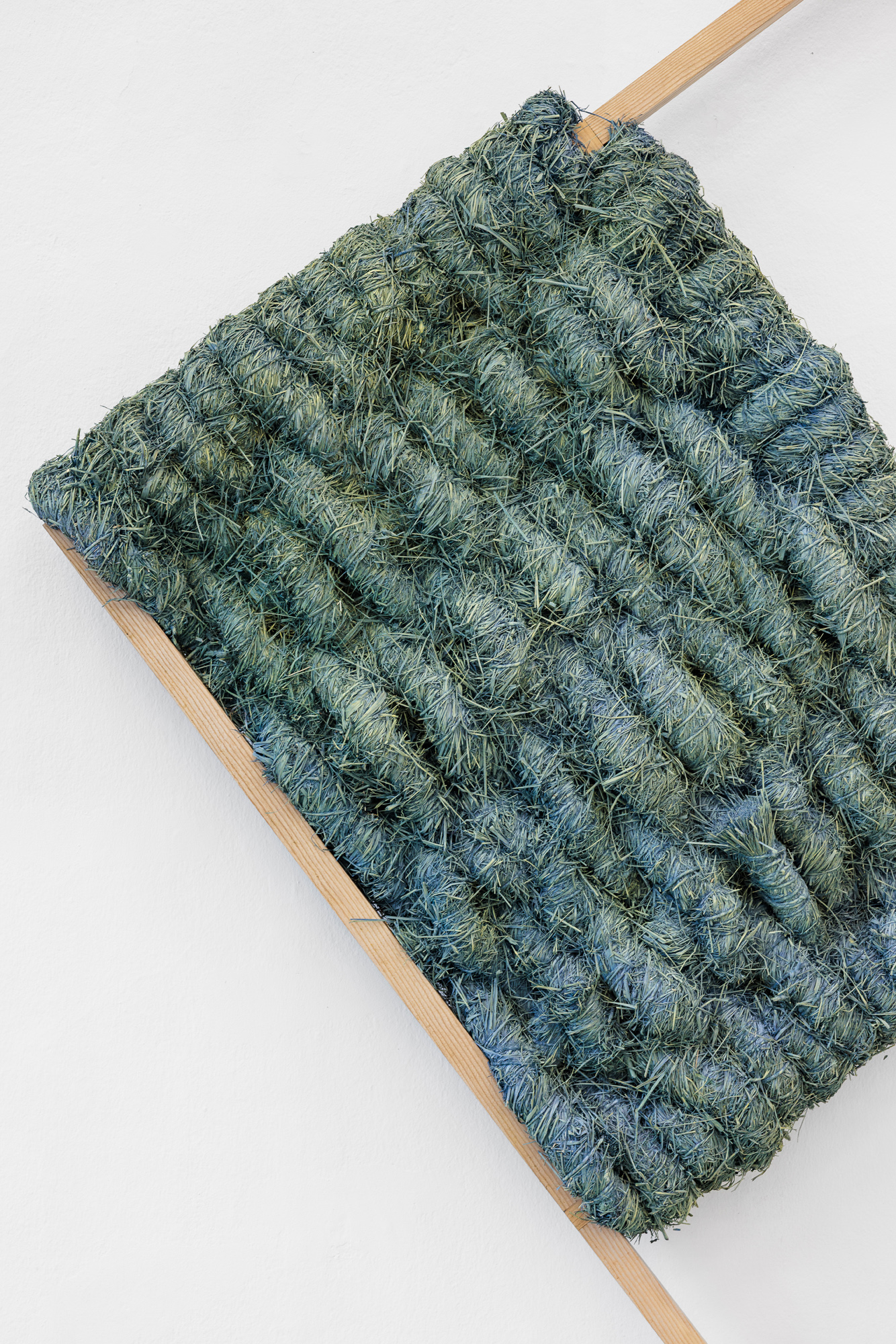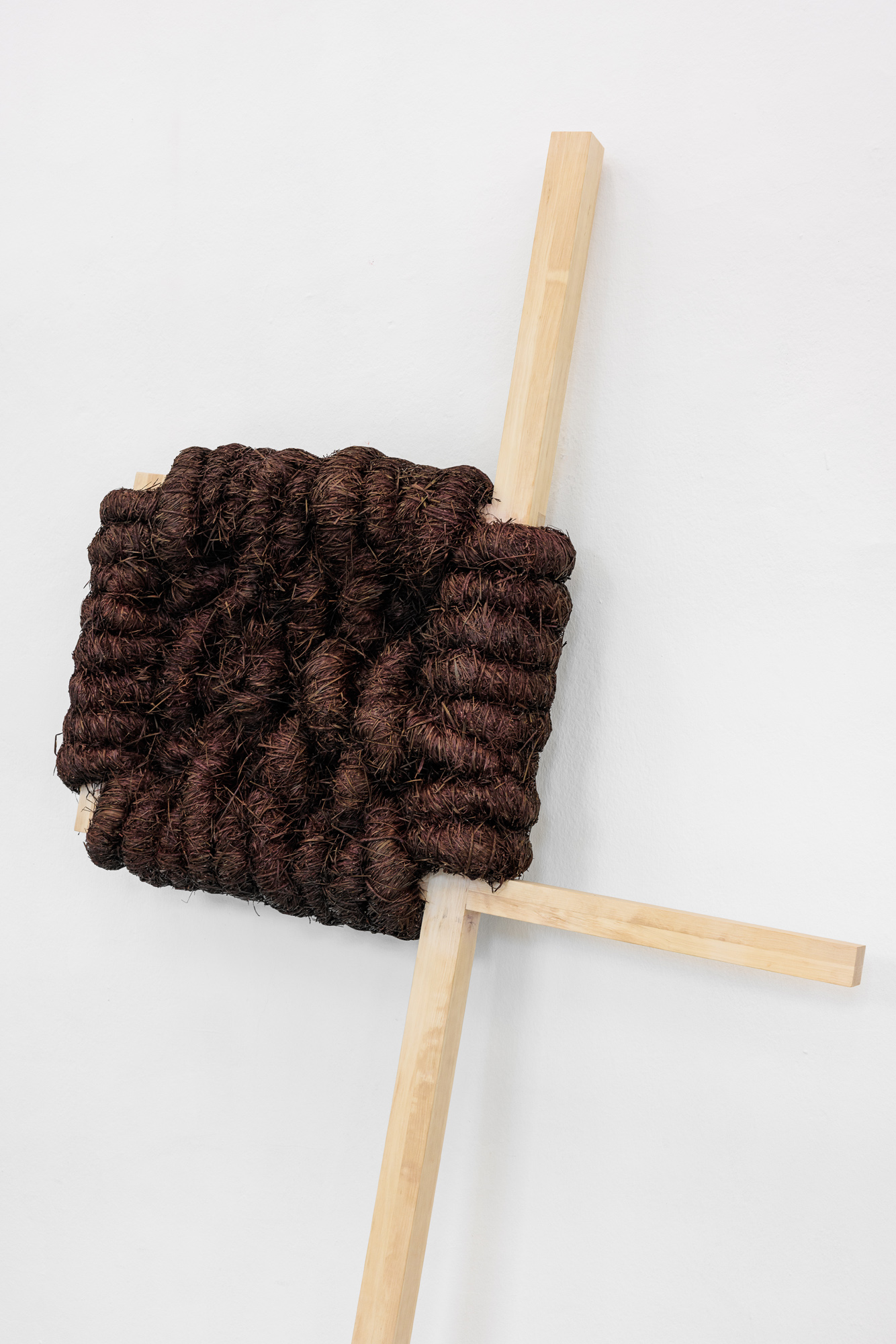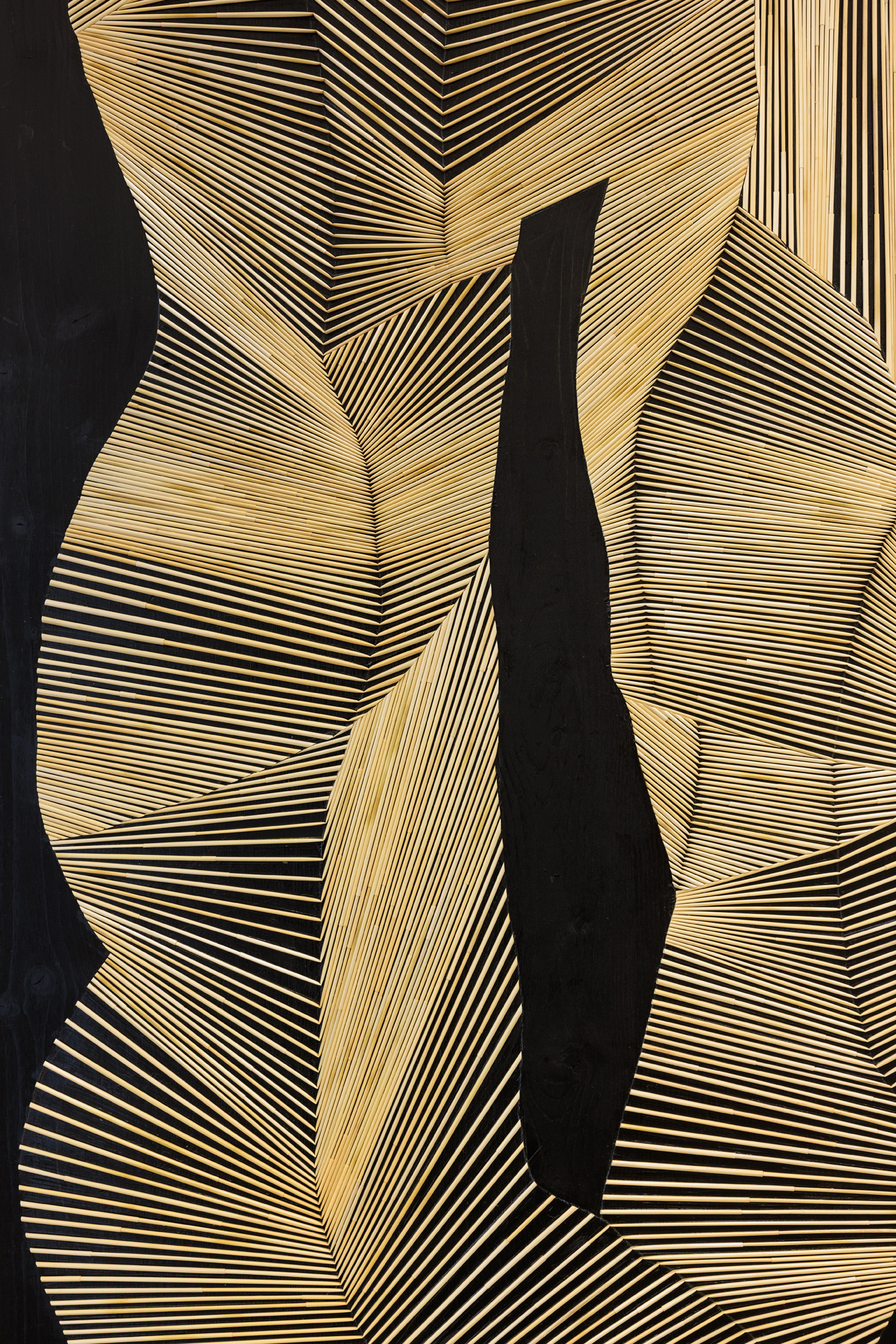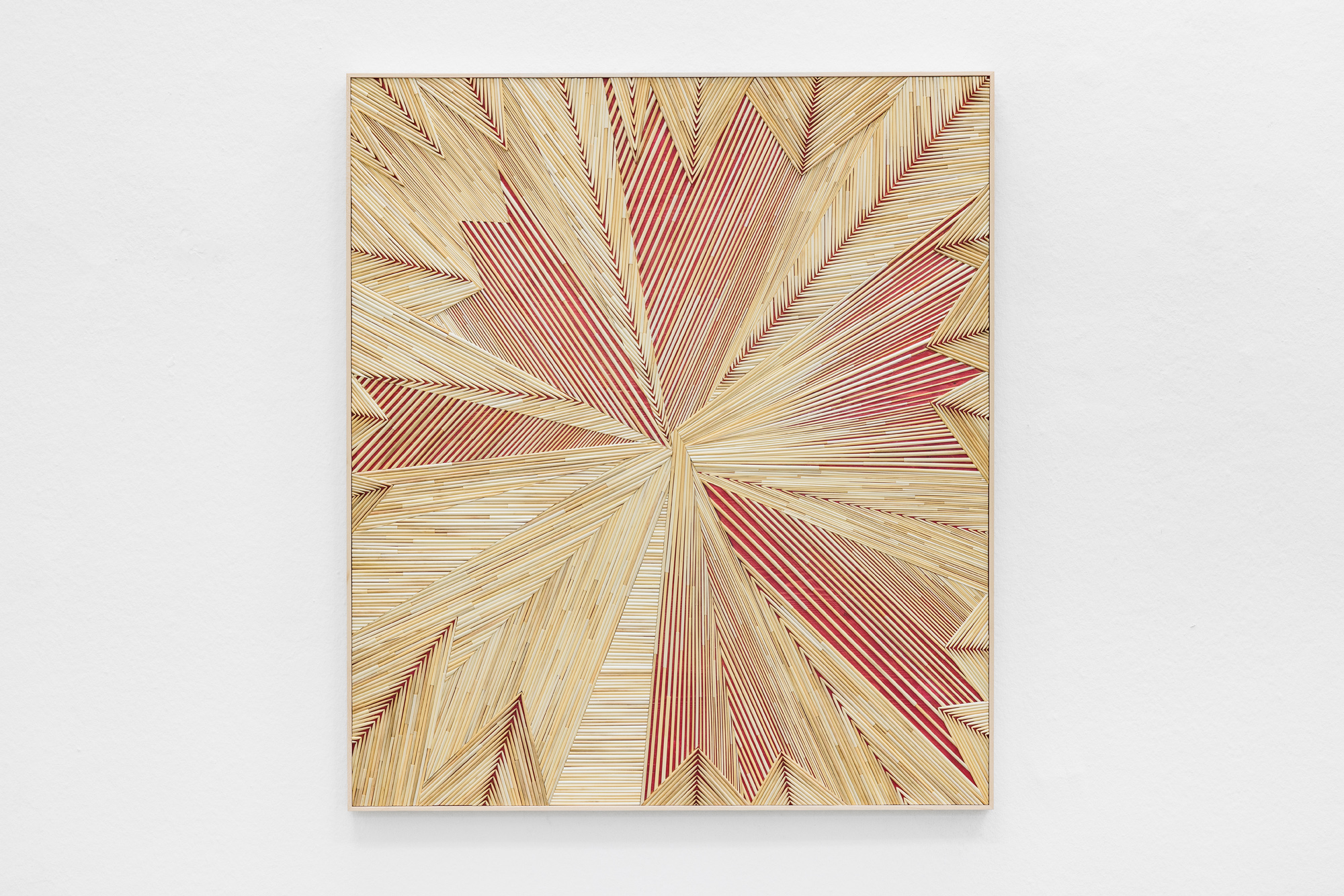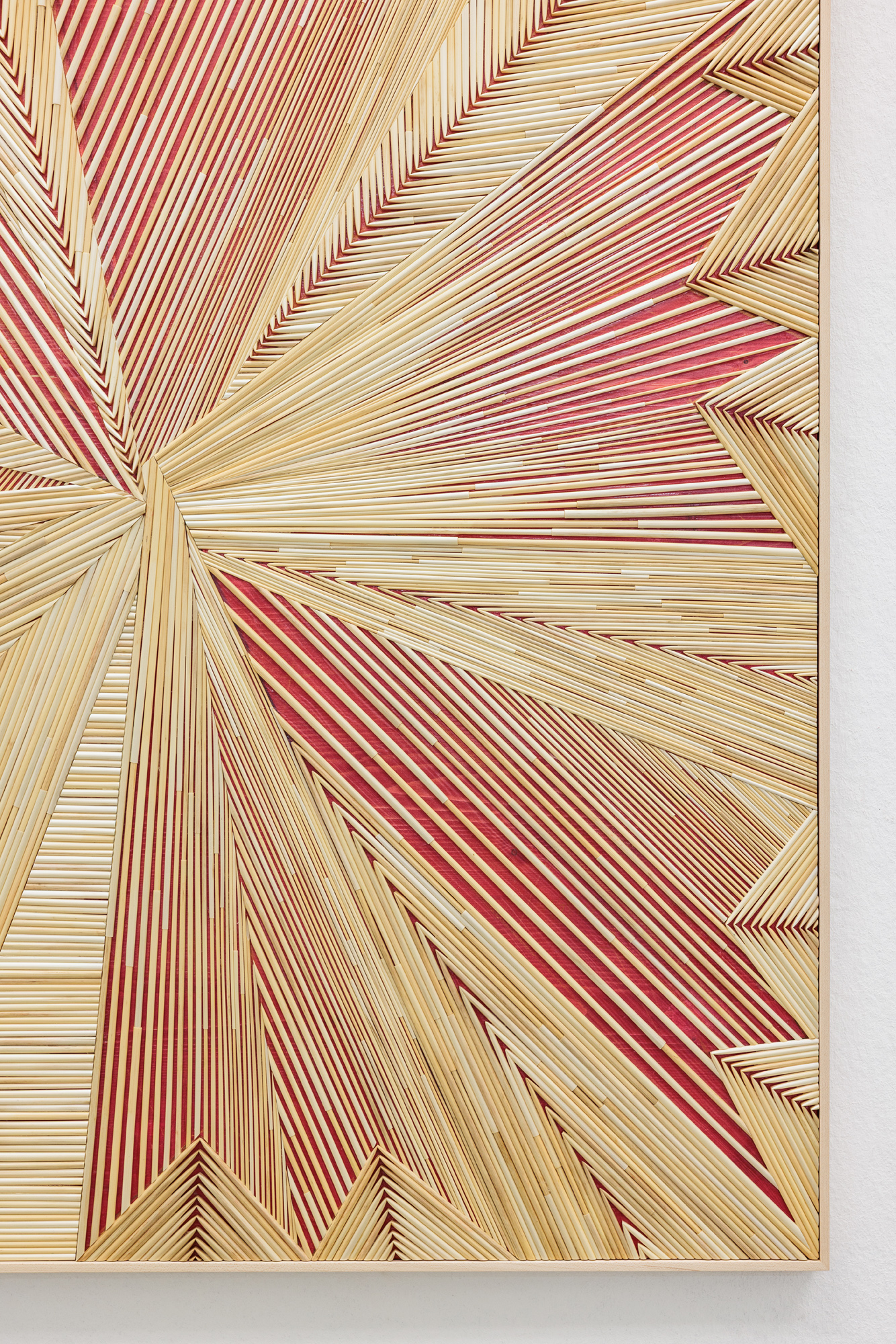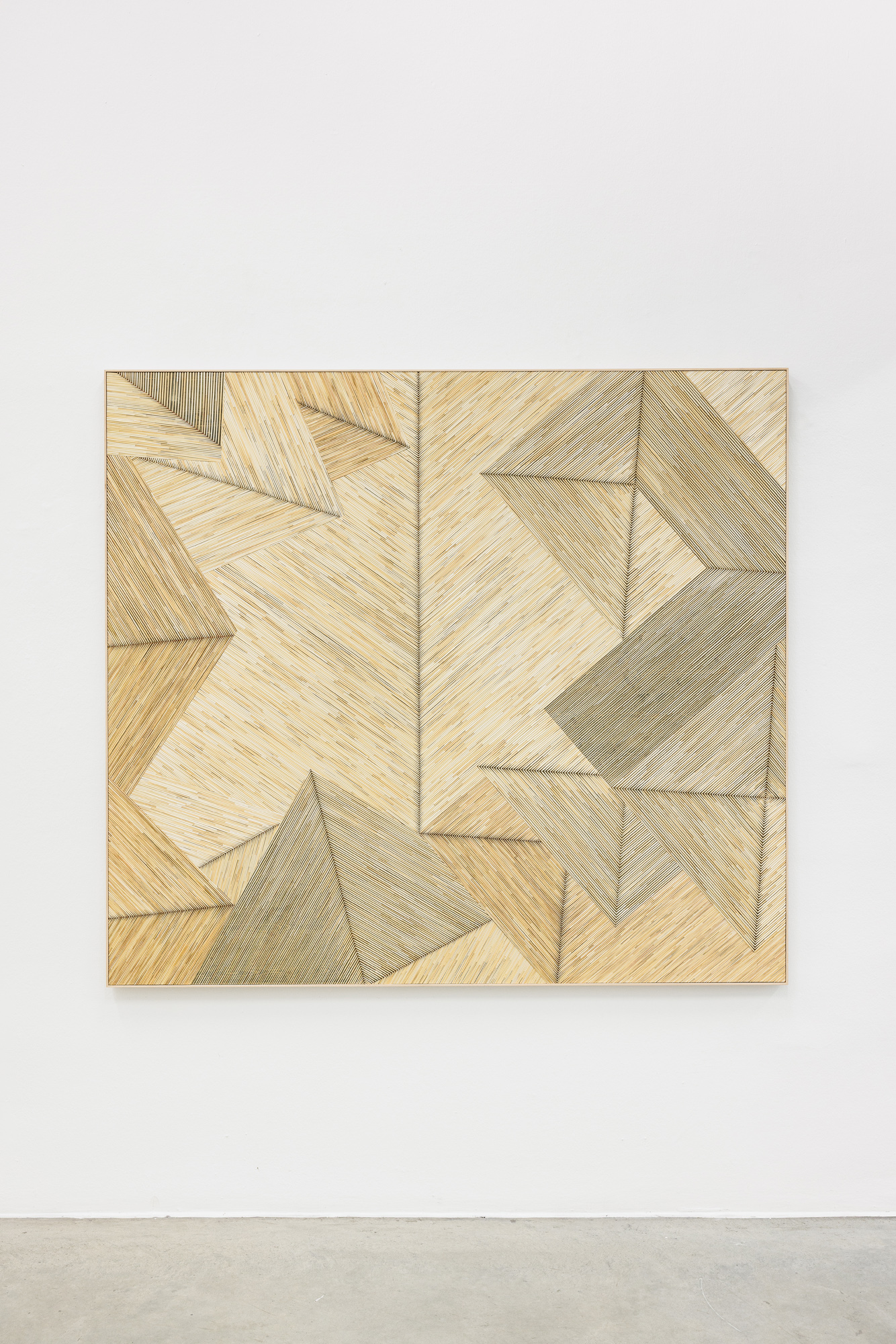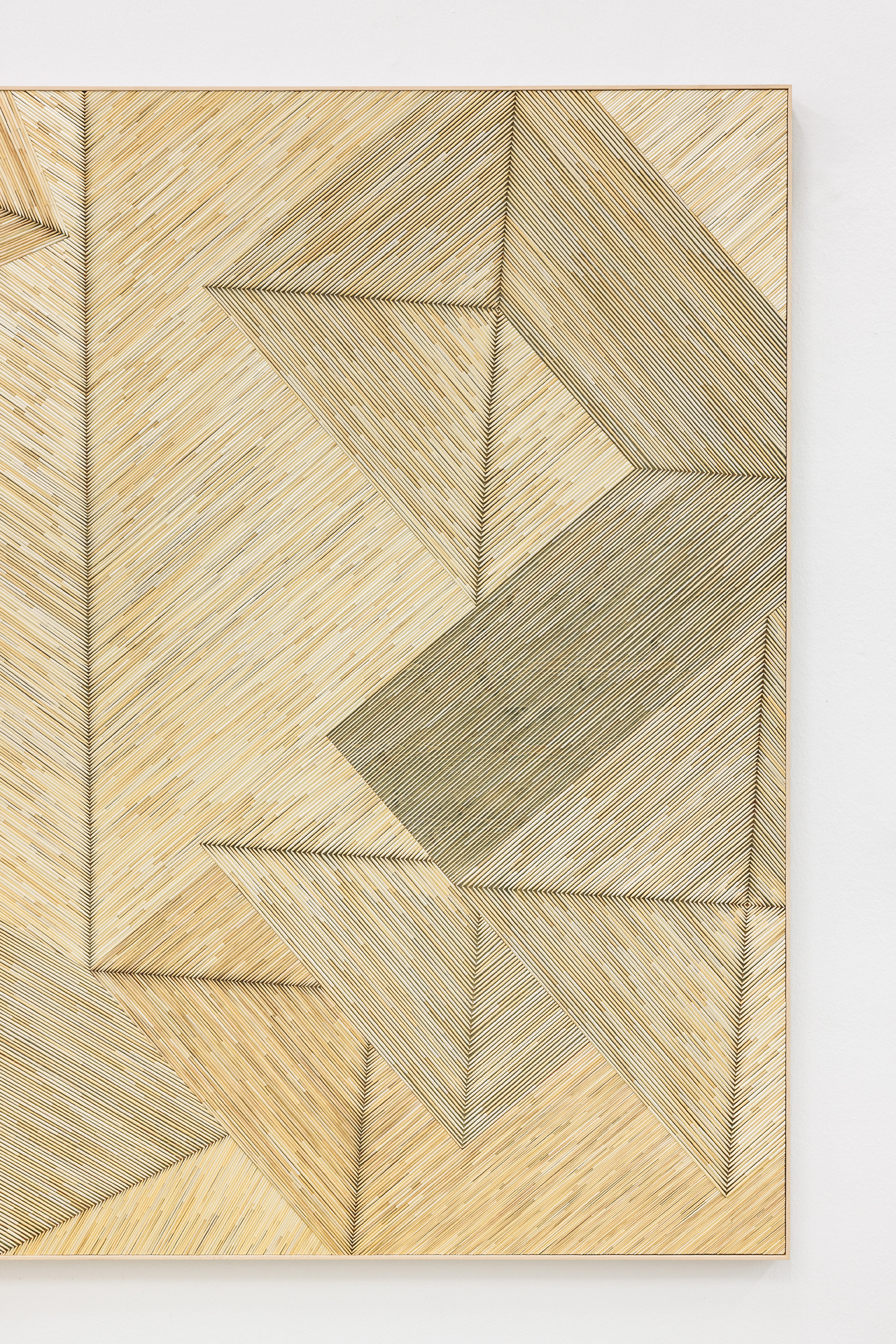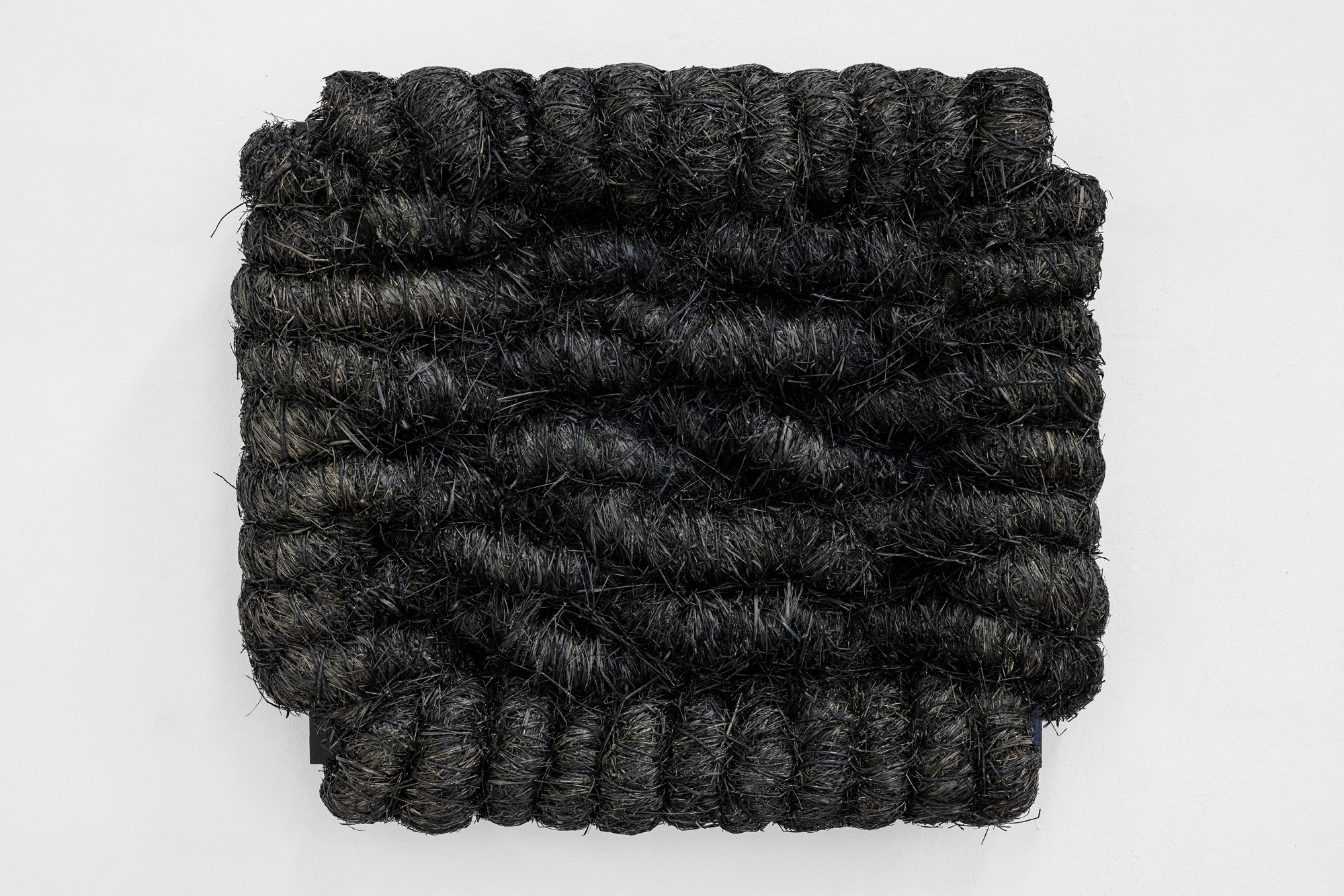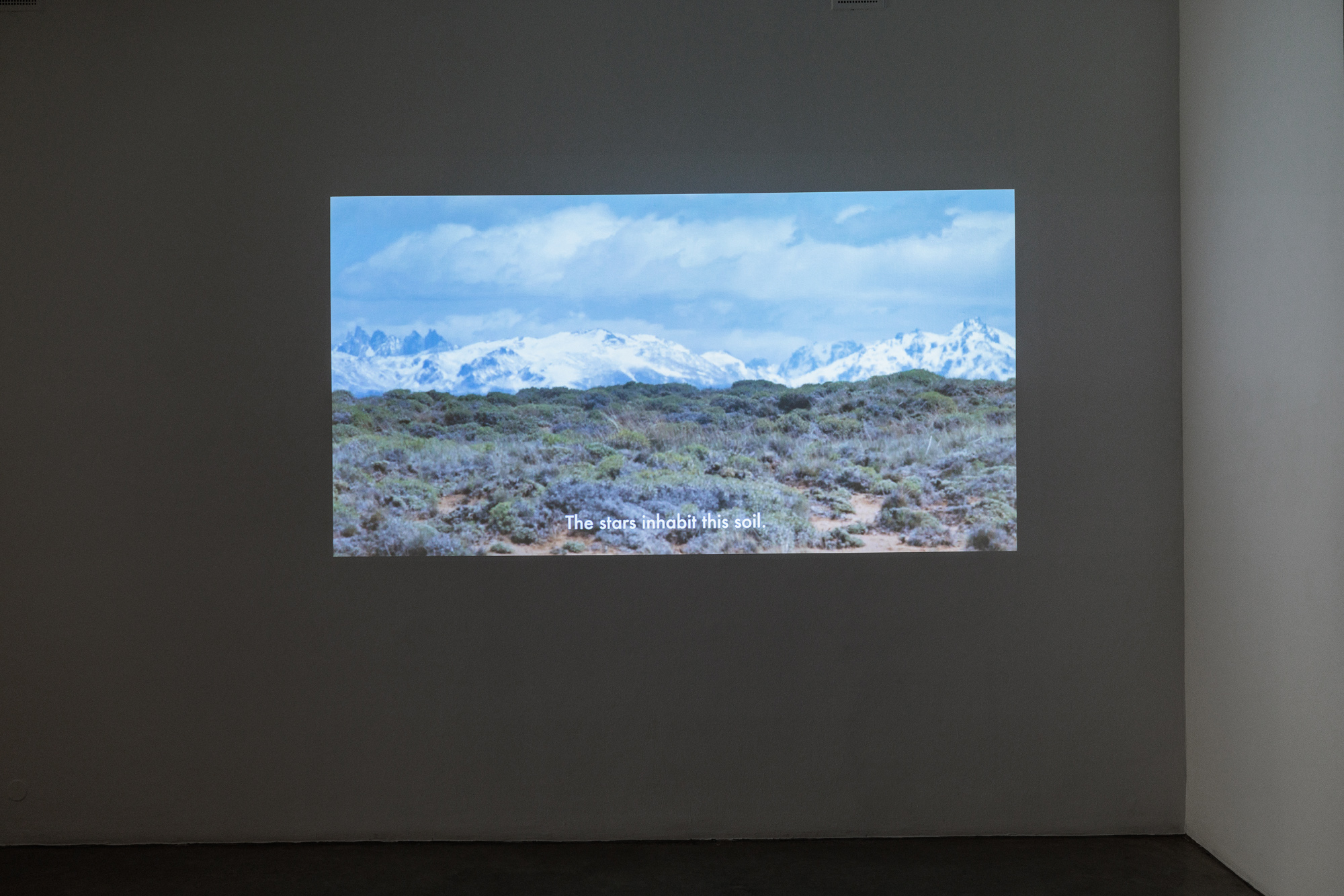Christine König Galerie curated by Kathleen Reinhardt
„Drawing shapes and lines of the world we made“

www.christinekoeniggalerie.com
Curator(s):

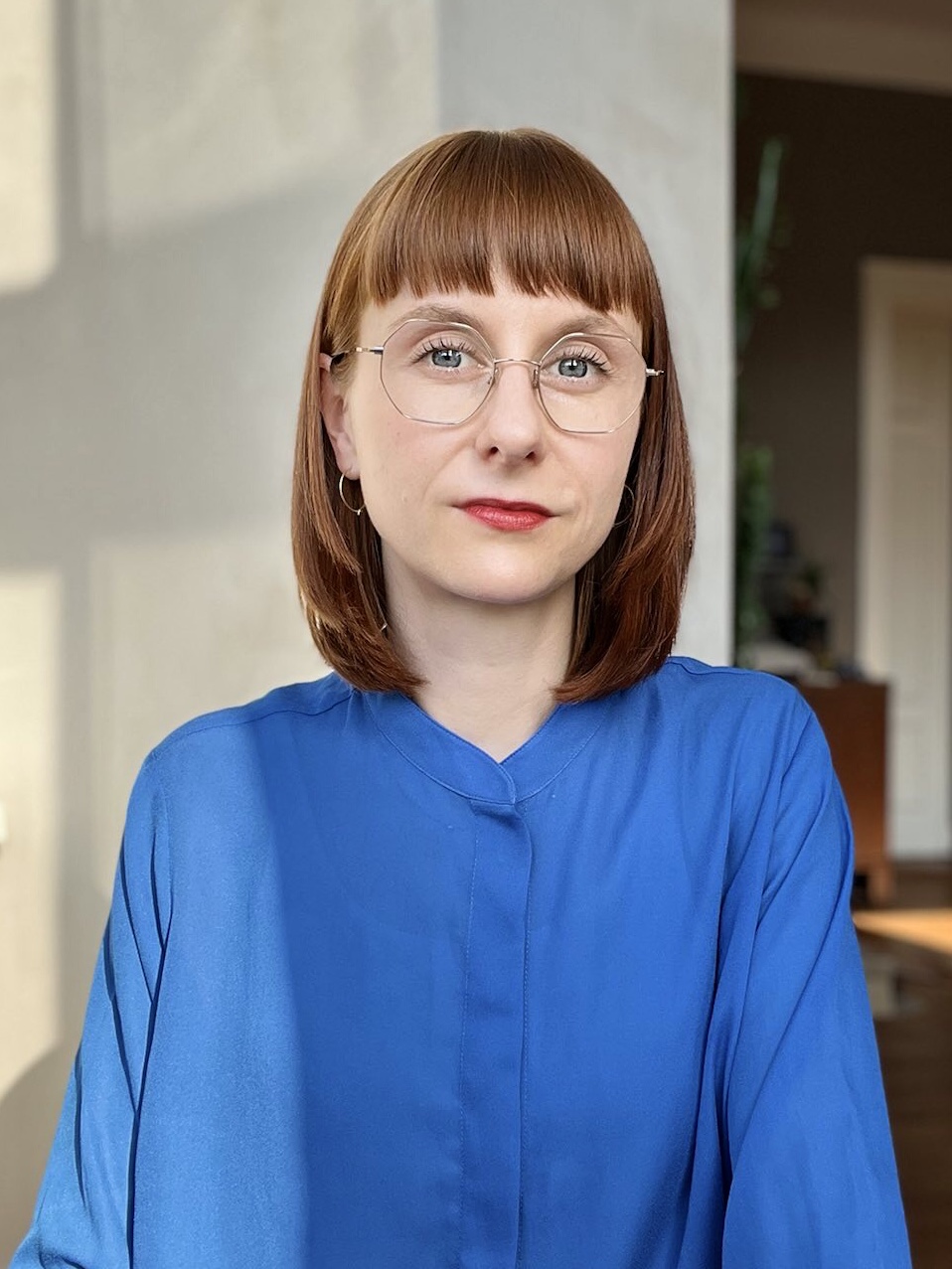
Artist(s):
-
Olaf Holzapfel MoreOlaf Holzapfel, geboren 1967 in Dresden, lebt und arbeitet in Berlin und Südbrandenburg. 1996-2001 Studium der Malerei an der Hochschule für Bildende Künste Dresden. 2001-2002 Studienaufenthalt am National Institute of Design (NID) bei Singanapali Balaram, Ahmedabad, Indien. 2003 Artist in Residence am Masters Program der Columbia University New York. Lehraufträge: HISK Ghent / Belgien; Sint-Lukas School of Arts Brüssel / Belgien; Hochschule für Gestaltung und Kunst FHNW Basel / Ch; Bezalel Academy of Arts and Design Jerusalem / Israel; Evangelische Hochschule Bochum / D; Muthesius Kunsthochschule in Kiel /D; Universität für Angewandte Kunst Wien / A; Akademie der Bildenden Künste Karlsruhe; HfBK Hamburg. Seine Arbeiten wurden mehrfach international gezeigt, darunter 2017 auf der documenta 14 und 2011 auf der 54. Biennale di Venezia.
Exhibition text
More
In her essay for this year’s “curated by” festival, Sophia Roxane Rohwetter, referencing the author and theorist Maurice Blanchot, writes, “In a contemporary world of painful contradictions, the fragmentary reminds us of these contradictions, and gives reasoning a form in contradictions.”
The analysis and processing of the fragmentary appears in highly diverse forms and media in the works of Olaf Holzapfel. His method of reasoning and working is always characterised by an urge to critically investigate and dismantle the inherent logic of processes and structures: from his early, today highly topical investigations of breaches in image spaces between computer images and painting, to sculptural spatial images and architectonic constructions made of natural materials in interior and exterior spaces, up to video works which explore highly diverse mental and physical spaces and poetically put them up for negotiation. His circling around the materialities of our physical world always constitutes the foundation, as does a continual questioning of the artificial demarcation between analogue and digital, art and craft, high culture and popular traditions. While doing so, he modifies the familiar characterisation of an object, without, however, erasing its identification, that is, its situatedness within the networks of cultural affiliation and social symbolism. His Straw Pictures are clearly made out of straw, and the stalks constitute the exalted lines of abstract compositions. These compositions can diverge rhythmically, and they can also be strictly geometrically organised. The artist is initially less concerned with the symbolism of straw or the configuration of a pure surface; he is far more interested in the practical application and what results from it. He consistently takes this probing of the possibilities of application seriously and reevaluates them, creating a material-based space for decisions, which always is central in his artistic practice. As a consequence, the material exhibits itself in his works and thereby creates its own meaning.
Media before media
Olaf Holzapfel’s sculptural Half-timbered works were created after 2010, and extend from small models up to life-size realisations in the middle of nature. Likewise, they reflect the exhibitedness of their own content. Art can be constructed and built like a house, and for the erection of his large half-timbered works, this work is carried out not by art handlers but, logically, by carpenters. The integration of specific motifs and figures of German half-timbered constructions, as they are primarily found in Central Germany, represents the artist’s interest in the connection between technique and image. These pictorial signs of houses in the form of visible half-timbered constructions are media before media. They circulate in woven forms, basic constructions such as trestles, frames, or thresholds, and in their combination of body, object, and sensation, they generate a language that is both – carrier of the image, and the image itself. The Hay Pictures also epitomise this. They are material of the landscape, as well as pictures about the landscape. Concurrently, however, they call into question not nature, but cultural techniques around nature and, thereby, our ideas about nature itself. Therefore, Holzapfel’s works are never romanticising, never a glorified consequence of nature and the integration of amorphous natural structures. The artist always begins his reasoning starting with the line, and all of his fibre-containing materials embody within them this orientation towards the line. In the process, his work alternates between analogue and digital and occupies the space between nature and culture, which are not to be comprehended as opposites. The artist often conceives his designs on the computer, yet in their material-based implementation, practical decisions dominate. He describes these material occurrences as ‘common ground’ between himself as an artist and between producing communities that are oriented towards handicraft. Whether in his collaborations with the weavers of the South American Wichí or carpenters from all over the world, it is always a question of developing a common, material-based conversation. In this manner, an intercultural and intertextual mise-en-scène arises, an ongoing translation process that sets in motion culturally and chronologically widely separated signs.
Transitions
Olaf Holzapfel’s interest in transitional zones, the in-between, is also apparent in his film Latitude 40°. He depicts the broad landscapes of southern Chile and Patagonia in sensuous, almost overwhelming images. We see sky, land, the herding of animals, maintenance repairs that are completed, and again and again the contrast between fences that appear as miniatures in images that are dominated by clouds and sky. In one musical passage, the fragmented beats correspond to the refracted sky, therefore creating a feeling that is immersively overpowering. Once more, the artist brings history and the present into a dialogue by referencing the German geographer Hans Steffen (1865-1937), who attempted to draw exact divisions throughout one landscape and cultural space in order to determine the border between Argentina and Chile. The poetry of the Mapuche poet Elicura Chihuailaf ponders human and nature, testifying to a self-evident, flowing sense of connection without idealisation. In this manner, the tiny fences that divide the landscape can be understood not as boundaries, but rather as connecting lines of the settlements, leading from one to the other and overriding artificial partitions.
What I call homeland, or how the homeland can abandon one
The approach of an additional, important reference figure for Holzapfel can be viewed in a similar fashion. The photographs of the South Tyrolean publicist, art critic and local history researcher Kristian Sotriffer (1932-2002) connect the segments of the exhibition. Sotriffer, for his part, called into question the national boundaries of the Alpine region and viewed the region as a coherent cultural space. In his book “Heu & Stroh” [“Hay and Straw”], he pursues regional idiosyncrasies and cultural techniques in interaction with these materials: they fascinate him just as much in the rural forms at harvest time, as they are also extensively situated by him in the history of art. Sotriffer’s photographs are part of the exhibition. In an essay entitled “What I call homeland, or how the homeland can abandon one” (1983), Sotriffer argues for a new usage of the term ‘homeland’, so that it is inclusive and not exclusive. He sees ‘homeland’ as a dynamic, flexible idea that is in flux, in contrast to the projection of habitual traditions. To conceive of craftsmanship as ‘fixed’ misses the point of the processes of development of these traditional practices, since these are constantly progressing and should not be proclaimed as unalterable. For Olaf Holzapfel just as for Kristian Sotriffer, the issue is far more about the presence of an environment in all its potential, not questions about its established origin per se.
We are currently again living through a highpoint of tense relationships arising from differing views regarding the connection to location and homeland and how, on the one hand, these are situated in a static system and expressed by xenophobia, and on the other hand, how these can be expressed in an enhanced conception of community and an appreciation of dynamics between ‘one’s own’ and of the alleged foreigner. With this in mind, homeland and tradition are not static for Holzapfel, but instead they bring things together, they are deeply rooted in material culture but nevertheless continually develop, are shared, and thus can enter into surprisingly new interconnections. Based on this foundation, the artist is always deeply interested in the most diverse regional traditions, craftmanship, cultural production, and the material systematic thinking – and its fracturing – arising from them. He deploys material and immaterial heritage as a method – he wants not only to preserve it, but also to extensively rethink it. Olaf Holzapfel materially connects the perception of the space of the environment back into his work as a wilful act. Things which are today propagandised in cultural struggles as unalterable and established are indeed cultural techniques that have always been in flux and ever-evolving, and which occupy spaces of ideas and materially describe what the world is and what it represents.

